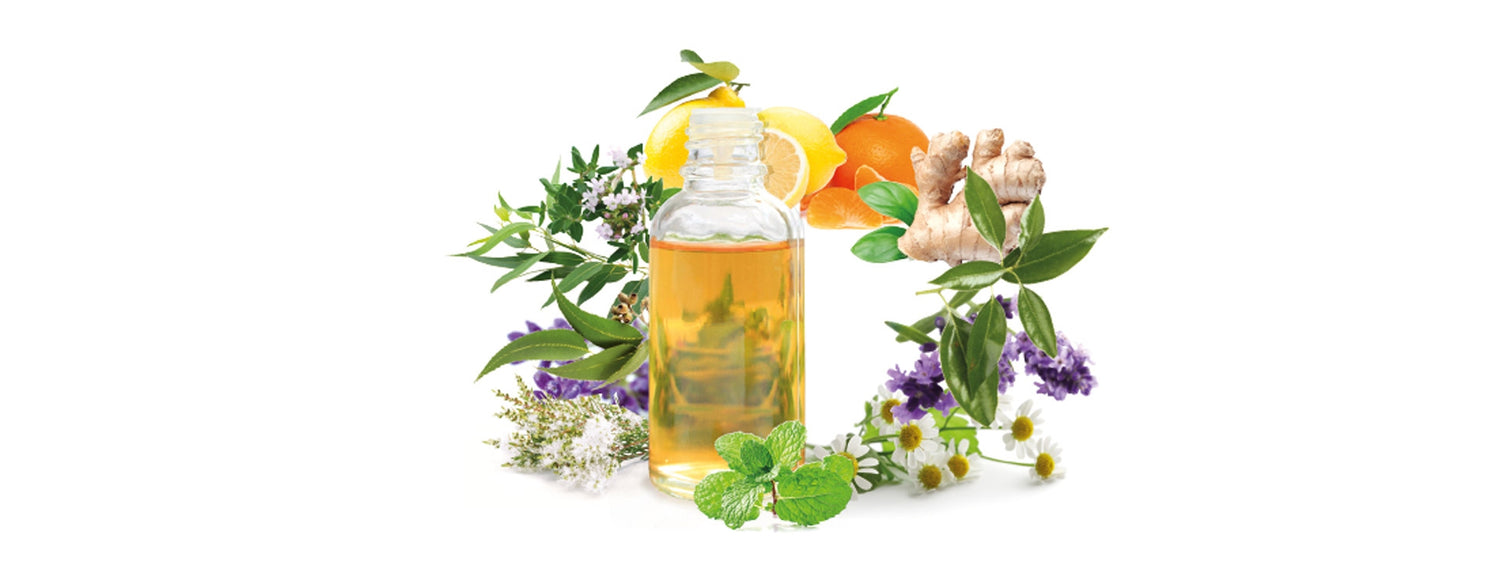Aroma… what? A friend or acquaintance recently told you about aromatherapy and essential oils but you don't really know what they are. How to use them? What to really pay attention to? Or how to store them? So many questions that we will try to answer to help you in your quest for knowledge.
Aromatherapy, an ancient art
Did you know that phytoaromatherapy is the oldest therapy in the world ? Used forever, it was in 1930 that we first spoke of aromatherapy. Complementary to allopathy, the latter aims to restore the balance of the body as a whole. Also, with an increasingly marked return to nature in our society, new needs are emerging. Aromatherapy thus offers the opportunity to rediscover this age-old art. Today, within the French School , scientists and therapists have taken over to make this approach known as medicine in its own right. It is therefore not a simple fashion effect but rather a field medicine which, when used wisely, can work real wonders.
Therapeutic properties
Among the 800,000 plant species, aromatic plants capable of synthesizing an essence are few in number. Only 10% of the plant kingdom has the possibility. It is through distillation that these aromatic plants produce essential oils. Each essential oil is composed of biochemical molecules which are at the origin of its properties.
The composition of an essential oil is complex. Indeed, it contains many different aromatic molecules . It therefore has several therapeutic properties. There are numerous scientific studies that demonstrate the biological and medical properties of essential oils. And increasingly recognized also by the hospital world. In addition, depending on the needs of each person, it is possible to combine essential oils synergistically.
Ways to use essential oils
3 modes of use:
- Skin application: The preferred route is generally skin application. In fact, essential oils pass through the layers of the skin to reach the blood circulation. This route therefore combines efficiency and job security . However, it is advisable for certain essential oils to dilute them in a vegetable oil in order to avoid dermocausticity or as a precaution, if you use them on young children or pregnant women. In all cases, be sure to always choose a virgin and certified ORGANIC vegetable oil .
- Olfactory route : Through this route of administration, odors and the messages they contain are sent to the limbic brain. This is where our emotions and our emotional memory reside. The different olfactotherapy techniques are: inhalation using an aromastick inhaler , breathing through a bottle, application to the wrists and then “smelling” by placing the hands on the nose and diffusion.




- Oral/sublingual route: Our blood and nervous network at the level of the oral and sublingual mucosa is such that it is very interesting to take advantage of this method of use in particular to obtain effective and instantaneous action . However, it is important to dilute the drops of essential oils on a neutral medium , which will reduce the taste and avoid overdose.
From plant to bottle: a quality manufacturing process
Obtaining a quality essential oil results from a process of distillation of an aromatic plant (e.g. mint ), a flower (e.g. chamomile ), a seed (e.g. carrot ), a wood (e.g. sandalwood ), a fruit (e.g. mandarin ) or a berry (e.g. juniper).
Distillation is carried out by steam distillation under low pressure . This very delicate process requires experience and constant monitoring . The artisan distiller also uses his know-how to collect the quintessence of the plant , without altering it.
At the exit of the distillation tank and under controlled pressure, the water vapor enriched with essential oil passes through a coil where it condenses. Then, an essencier collects the water and essential oil. Citrus fruits ( lemon , tangerine , etc.) are obtained by another process which is cold expression, the product thus obtained is called ' essence ' by purists and not essential oil .
This manufacturing process makes it possible to produce a quality essential oil:
- 100% natural: that is to say not denatured with synthetic molecules, chemical emulsifying agents or mineral oils.
- 100% pure: that is to say free from other similar essential oils, vegetable oils, alcohol, etc.
- 100% integral : not amputated, not discolored, not deterpenated, not rectified, not overoxidized, not peroxidized.
How to store your essential oils?
Essential oils are sensitive to ultraviolet rays . They are therefore stored in glass bottles (brown, green, blue). But still, don't forget to close your bottle after use to preserve its richness in molecules . By following these tips, you will be able to keep an essential oil for five years and three years for essences.
Precautions for use
To fully benefit from all the benefits of essential oils and guarantee their proper use, it is very useful to specify the few tips and precautions that govern their use. Indeed, although they are natural, these substances can prove dangerous if the doses, routes of administration or frequency of intake are not respected.
Dominique Baudoux's 12 favorite essential oils
In the Practical Guide to Family and Scientific Aromatherapy , you will find essential oils which are among the greatest classics : Exotic Basil , Ho Wood , Noble Chamomile , Lemon Eucalyptus , Egyptian Geranium , Immortelle , Noble Laurel , Aspic Lavender , Peppermint , Ravintsara , Tea tree and Common thyme with thujanol . In fact, having them in your possession means having a beautiful family pharmacy! You will also find in this guide the natural synergies to achieve against everyday ailments. An easy read that will let you know exactly how to use them .
Dermocaustic: which can cause significant irritation to the skin and mucous membranes.






